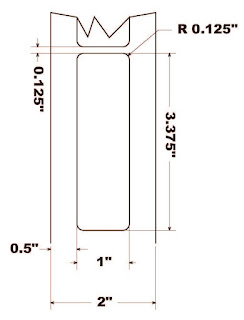When first speaking, SPARC was looking for a lower cost method to label
their products. According to Justin
Morgan, IT Director at Sparc,
“We were purchasing 5 different versions of preprinted
labels from our
bag vendor; and wanted a lower cost means to color code our products. Color-codes are important for us and our
customers. We use the color codes in
both our labels and menus. The colors
differentiate the genetics of our different strains of cannabis. Purchasing 5 different kinds of bags was
expensive in the quantities we were purchasing.
Our hope was to get lower prices by purchasing larger volumes of single white bag;
and printing custom color labels to affix to them.”
After understanding the requirements, I printed and sent samples to
Sparc to test.
 |
| SPARC Sample Label |
Based on the recreated label format, I estimated the ink cost at
$0.002/label. In addition, I calculated
the costs of continuous labels at $0.005 each.
The overall costs of these labels were much less than 1 penny each.
After hearing the estimated costs, Sparc decided to test the
C3500. We sent them a demo printer to
run with the label application, BarTender.
Justin said, “we used BarTender to add the variable data in black print
to our labels. To run the C3500, we just
recreated the label template adding a variable image field to the existing
label and database.”
 |
| Sparc Test Labels |
As a first draft, the BarTender label template was not perfect; with
some of the print off the edges of the label.
Working with Justin, we got the labels centered by taking into the
account of the .06” non-printable boundary.
With the new drivers, you can print to the edge of the labels.
 |
| Sparc Finished Label |
Based on this work, Sparc purchased a C3500 and gloss paper
labels. Since the initial purchase,
Sparc has added matte poly labels for their smaller vials. “We needed the poly to work with the small
circumference packaging”, says Justin.
The poly labels are more conformable with less memory than paper. These advantages make the poly labels perform
better for tighter wrapping applications.
 |
| Sparc Finished Label |
In addition to the color-coded finished good labels, Sparc need a means
to track their plants in production.
Justin says, “we were hand writing up labels for our individual plants;
and we needed a less labor-intensive means for their work.” Based on this requirement, we sold Sparc a
thermal transfer printer and “Pot Stakes” to track their production.
 |
| Printed Pot Stake |
“Using the pot stakes are much easier and faster than the hand labeling
we were doing previously” says Justin.
 |
| Sparc Finished Label |
Justin says, “overall, I’ve found the label printing solution
incredible; especially the BarTender integration. Also, we’re very happy with the quality of
the print. We’ve found a large cost and labor savings providing a great return
on our investment in the label printers and software.”
 |
| Sparc Labels |
And
from a long time ago, a post covering our long-time customer Green Ticket
Bakery who now has upgraded to a C3500 to print their labels: http://colorlabelsondemand.blogspot.com/2012/06/baking-medicinal-brownies-printing.html
We love and support all of our customers; but we especially appreciate long-time customers such as Sparc. If you need labels for your cannabis products; or need color coded
labels to improve your work processes, contact us. We can help!
Guy Mikel
855-962-7670






























